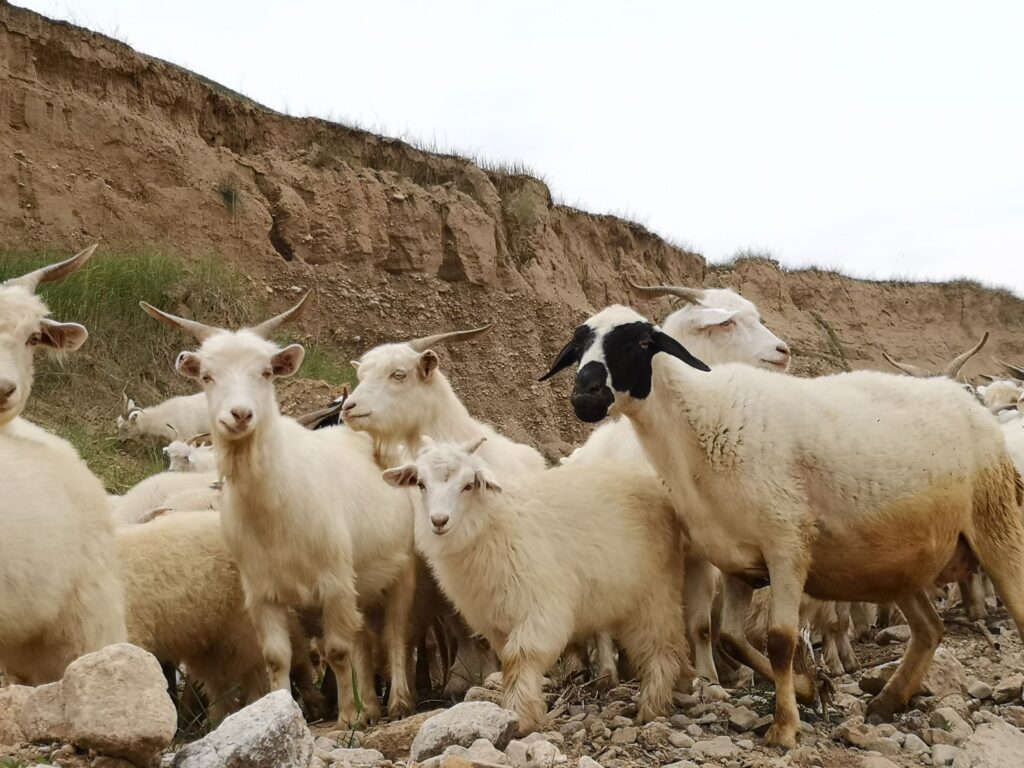Cashmere is a type of wool that is primarily made from the hair of goats native to the Gobi desert and central Asia. Due to its softness and light weight, cashmere has long been prized as a material for sweaters, scarves, and other pieces of cold-weather gear.
Because cashmere is not as insulative as other types of wool, it was historically only used as a wearing material for the very wealthy. However, cashmere is much softer and finer, which makes it possible to weave cashmere into highly dense but thin fabric. This type of wool will not insulate you as well as traditional sheep wool, but it is soft enough to wear directly next to the skin, which is advantageous for applications like underwear and undershirts.
Historical Origins of Cashmere Wool

Cashmere wool was first used in Kashmir, a region between the Pir Panjal Range and the Great Himalayas in the Indian subcontinent. Textual references to shawls made of cashmere wool date back as far as the 3rd century BC (1400s BC), but historical context shows that its popularity as a common textile for many different types of clothing did not occur until sometime during the 14th century AD.
Although many different breeds of goat produce wool, the finest cashmere is made from the downy undercoats (known as coarser hair or guard hair) of the Capra aegagrus hircus, or the Hircus Blythi goat. These animals may also be referred to by their Persian and Urdu-inspired name, the pashmina goat. Some regions use the terms interchangeably for fine-haired goats like these.
Pashmina goats are now found in a variety of regions across the globe, including Kashmir Valley and surrounding areas of Nepal and Mongolia. Many believe that the unique climate and terrain of that region result in a finer, softer down from the pashmina goats raised there. Cashmere wool that originates from this area of the world is often prized as the best for making clothes like sweaters, shawls and soft, sturdy thermal pieces like hats and gloves.
The Process Of Manufacturing Cashmere Wool
Gathering
The process of gathering wool from pashmina goats and spinning it into high-quality cashmere yarn is time-consuming and labor-intensive. The double fleece that produces the undercoat and guard hairs grows during the winter to help insulate the animals against the drop in temperatures. The goats begin to molt, or shed, this wool once spring arrives; however, molting can begin as early as March in some regions or as late as May in others.
The traditional approach of hand-combing a goat’s fleece both to release the down and guard hairs is still favored for the superior yield it produces of pure cashmere. Hand-combing the fleece can take two weeks to remove the down from its undercoat, and any remaining guard hairs must be removed from the collected down so that the yarn that is spun from the wool is soft and supple.
Refining
Cashmere wool must be cleaned before it can be dyed, spun and woven into garments. This removes the remnants of dirt and debris, as well as strips the raw fibre of excess animal oils. At this point in the manufacturing process, it’s common to let industrial machinery do the hard work rather than washing, dyeing and carding by hand.
Dying
Dyers often dye fibers in large batches of a select number of highly saturated, vibrant colors. Depending on the desired result, different batches of these richly dyed fibers may be blended together so that the manufacturer achieves a variety of yarn colors without the need to dye each bolt a specific hue. This allows for faster production while maintaining flexibility in the spectrum of colors a manufacturer can yield.
Slubbing
Cashmere is a natural fiber that comes from the undercoat of cashmere goats. Fluffy clumps of dyed and blended raw cashmere wool are run through a multi-step process that webs it together into thin. Flossy sheets that are then turned into spools of a rough approximation of yarn. This intermediate stage is referred to as slubbing. To the untrained eye, it would look very much like finished yarn, but in actuality it’s a very weak bond between the fibers that could be easily pulled apart.
Spinning
Mules are used to spin cashmere slubs into yarn of varying thickness. The mules handle multiple spools at once, rapidly turning out yarn that is wound onto cones for a final quality check. At this point, it truly becomes cashmere wool yarn, ready for weaving into a multitude of luxury items.
Conclusion
For many cashmere garments on the market, the industrial loom does most of the work. Scarves and shawls are still frequently made by hand and therefore coveted for their unique character and intricate designs. For items like sweaters and jackets or small pieces like hats, socks, and gloves, it’s far easier to produce them in larger quantities by working with modern machinery than traditional hand-woven practices.